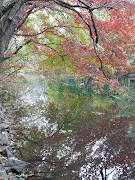Imagine that you have to prove your ethnicity when
filling out a census form and myriad other forms posing that question in
American society. Do you have an original document showing direct lineage from
ancestors who lived in a likely distant area of the world centuries ago?
That’s the seemingly impossible to navigate
bureaucratic maze faced by members of the Ramapough Mountain Indian tribe, whose
quest to prove their ethnic heritage is conveyed in "American Native," a new
documentary making the rounds of film festivals and scheduled to open in
theaters in September.
"Their history has
been written by everybody but themselves," film director Steven Oritt said
at a recent screening at the Hoboken
International Film Festival, held in Middletown, N.Y. Oritt and producer Corey Bobker made the
independent documentary to help tell that story.
Residents of northern New Jersey and adjacent areas in
New York are more likely to recall other names for these long maligned
Americans—the Mountain People, “Jackson Whites” and less printable names. This
film explores a gritty grassroots effort by marginalized American citizens to
reclaim a heritage denied by hostile neighbors, rumors fanned by newspapers,
and government officials parroting the self-interested howls of casino moguls.
These backwoods folks were mocked by Donald Trump, long
before he heckled fellow candidates for the Republican nomination for president
of the United States. Belittling the Ramapoughs’ request to be recognized as a Native American Indian tribe by the federal
government, which might potentially gain standing to open a casino closer to
New York City than his gambling palaces in Atlantic City, Trump announced on a
popular New York radio show—revived in this film—that “I have more Indian blood
than they do.”
The federal Bureau of Indian Affairs rejected the
Ramapoughs’ claim for lack of historical proof of tribal status, such as a
treaty with the fledgling US government.
Who gets to decide who is an Indian is an unsettling
question raised by this tiny clan of bow and arrow hunters who talk in a
distinctive Appalachian mountain tone, alternately polite, reflective, and bluntly
defiant.
Many of these families who live in Hillburn, NY,
Ringwood and Mahwah, NJ and neighboring towns have photos that trace their roots
to previous generations who lived in the once remote mountains along the New
Jersey-New York border, hunting, fishing, working in the iron mines created
before the American Revolution, working on horse farms and estates of 19th
century wealthy New Yorkers, and then at the massive Ford Motor Co. assembly
plant in Mahwah. Among relatives in the photos are sturdy, young men wearing
military uniforms of the world wars.
In scene after scene, the film shows repeated insults
from the current crop of mansion owners and government officials upset over the
notion of a hardscrabble group of self-styled American Indians insisting on
reviving their culture and traditions in what is now prime real estate in suburban
New Jersey and upscale Rockland County, NY.
On camera, local officials and owners of neighboring
mansions try to block tribal leaders from building a log longhouse on a scenic
tract on the Ramapo River. An academic researcher dismisses the Ramapoughs’
oral history of rustic life in the Ramapo Mountains passed down by generations
upon generations and insists that members of the group are actually descendants
of freed blacks who lived in New Amsterdam under the colonial Dutch.
In the unkindest cut of all, the head of the Delaware
Nation in Oklahoma proclaims in an interview at his tribal casino headquarters
that any Indians who stayed behind in New Jersey rather than be pushed west
abandoned any claim to tribal status. Asked about his heritage, the Delaware
chief cheerfully states that he is one-eighth Indian.
“I know who I am” is the refrain that weaves through
this film. In often impassioned dignity, men and women who grew up in these
ancient mountains, listening to stories by grandmothers about previous
generations who survived previous pressures to leave these forested ridges,
speak for themselves.
For more information:









No comments:
Post a Comment